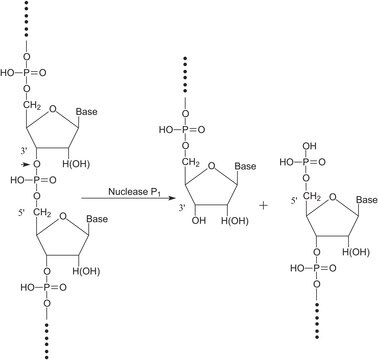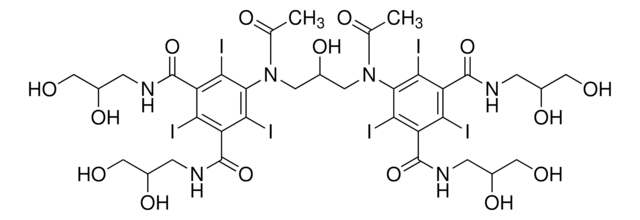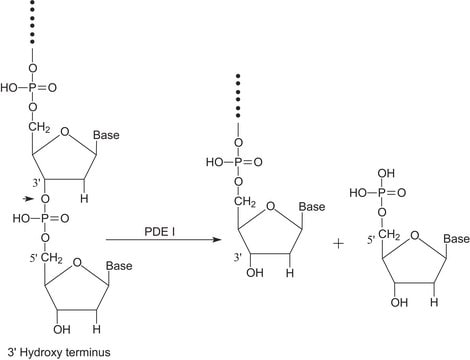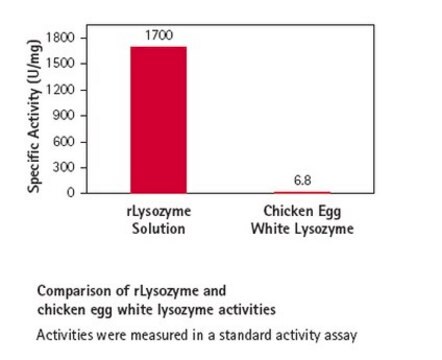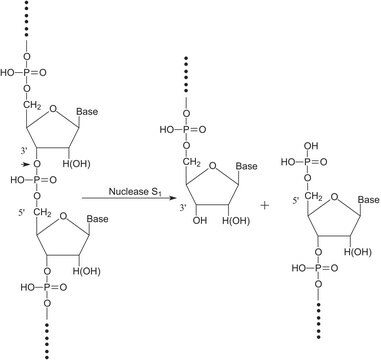Key Documents
E8263
Benzonase® Nuclease, ultrapure
≥250 units/μL, ≥99% (SDS-PAGE), recombinant, expressed in E. coli, buffered aqueous glycerol solution, ultrapure grade
Synonim(y):
Endonuclease from Serratia marcescens
About This Item
Polecane produkty
pochodzenie biologiczne
Serratia marcescens
Poziom jakości
rekombinowane
expressed in E. coli
klasa czystości
ultrapure grade
Próba
≥99% (SDS-PAGE)
Postać
buffered aqueous glycerol solution
masa cząsteczkowa
30 kDa
stężenie
≥250 units/μL
Zastosowanie
research use
Warunki transportu
wet ice
temp. przechowywania
−20°C
Szukasz podobnych produktów? Odwiedź Przewodnik dotyczący porównywania produktów
Zastosowanie
Działania biochem./fizjol.
Definicja jednostki
Postać fizyczna
Informacje prawne
Kod klasy składowania
10 - Combustible liquids
Klasa zagrożenia wodnego (WGK)
WGK 1
Temperatura zapłonu (°F)
Not applicable
Temperatura zapłonu (°C)
Not applicable
Środki ochrony indywidualnej
Eyeshields, Gloves
Certyfikaty analizy (CoA)
Poszukaj Certyfikaty analizy (CoA), wpisując numer partii/serii produktów. Numery serii i partii można znaleźć na etykiecie produktu po słowach „seria” lub „partia”.
Masz już ten produkt?
Dokumenty związane z niedawno zakupionymi produktami zostały zamieszczone w Bibliotece dokumentów.
Klienci oglądali również te produkty
Produkty
This page lists nine frequently asked questions and answers about Benzonase® Nuclease.
Na tej stronie znajduje się lista dziewięciu często zadawanych pytań i odpowiedzi dotyczących Benzonase® Nuclease.
Endonukleaza Benzonase® skutecznie usuwa zanieczyszczenia kwasami nukleinowymi z produkcji wirusów, co ma kluczowe znaczenie dla terapii komórkowych i genowych oraz szczepionek.
Nasz zespół naukowców ma doświadczenie we wszystkich obszarach badań, w tym w naukach przyrodniczych, materiałoznawstwie, syntezie chemicznej, chromatografii, analityce i wielu innych dziedzinach.
Skontaktuj się z zespołem ds. pomocy technicznej



